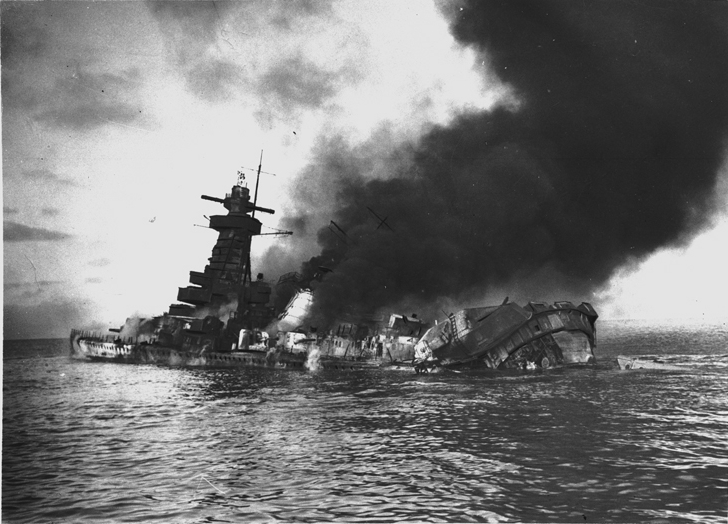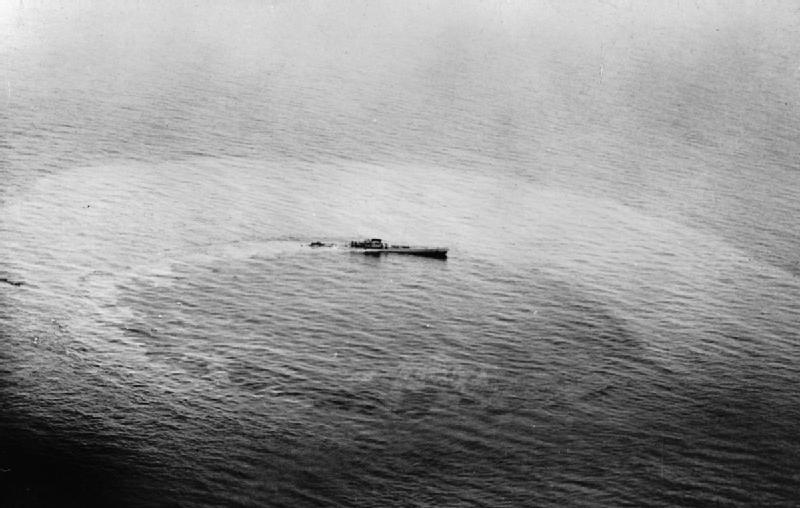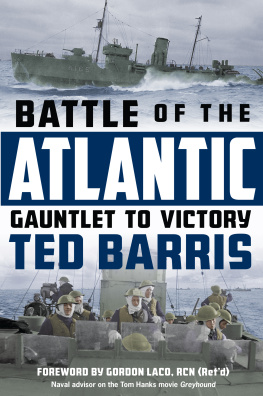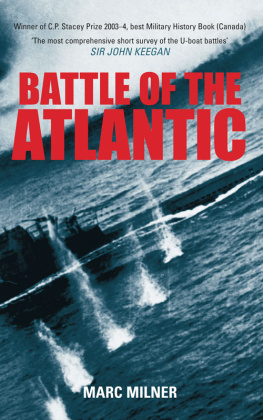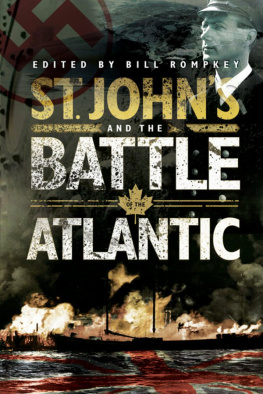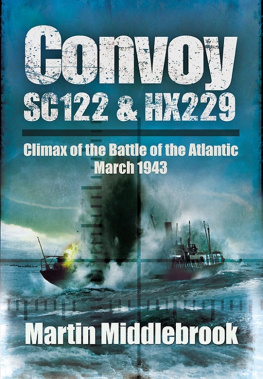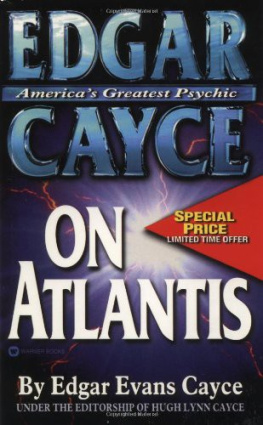BATTLE OF THE ATLANTIC, IN A FLY
Battle of the Atlantic, in a Fly
Long 2,075 days of War in World War 2
Author: Edgar Wollstone
All rights reserved. 2020.
DEDICATION
Dedicated to Lord.
Contents
Acknowledgments
Sincerely thankful to everyone for their wholehearted support for the release of this book.
Prologue
The longest naval battle of WW2, waged for a staggering six years in the tumultuous waters of the worlds second largest ocean, the Atlantic. Beginning on September 1939 and ending only with a headstrong Germany surrendering in May 1945; the Battle of Atlantic was predominantly a military campaign carried out by the Allies and Axis intended to cripple each others naval strength, block ships and cargos; thus also casting a blight on the economy of opposing nations.
Britain being a small island nation was heavily dependent on its imports from North America and Europe. German submarines, aptly called the U-boats, waylaid the ships bound to UK and hunted down ever merchant ship.
This strategic and systematic annihilation of enemy ships is called a tonnage war. To wage a tonnage war, all a nation has to do is, sink as many ships as possible, not giving the enemy fleet time to replace the sunken ships. German U-boats were a menacing threat to the Allies, and they were successful to a great extent during 1940-1942. Germany sank more than 400 Allied ships by July 1942.
The situation was dire for the Allies as Britain couldnt afford to jeopardize the supply link with North America and Europe. The Allies and the Axis were convinced that hegemonizing the world oceans was critical in winning WW2. Thus, both side pulled all possible strings and exhausted every stint up their sleeve to gain dominion over the colossal Atlantic.
The U Boat History
Germany was the pioneer in introducing submarines as an effective war ammunition. In WW1 and in WW2, U-boats or expanded as Undersea boat played a crucial role in defending Germans naval fight in the Atlantic. Germany had to forgo its U-boats according to the Treaty of Versailles signed after their abysmal defeat in WW1. Nonetheless, in 1935, Adolf Hitler, in what can be called a daring act, challenged the humiliating Treaty of Versailles and bargained for the right to build U-boats again.
U-boat peril during 1941
The U-boats continued to rule the roost, adding a significant number of ships sunk to its stride steadily, until the entry of US in the WW2. The winds of change began to blow in favor of Britain when its ally; the US merchant navy agreed to provide escort and supplies, alike. This combined efforts of enhanced naval protection of merchant shipping convoys along with increased shipment proved to be a difficult nut to crack for the hitherto invincible U-boat. During the initial days of the war, the number of U-boat available was a paltry 57. Germany steadily increased this number to buttress its combating abilities.
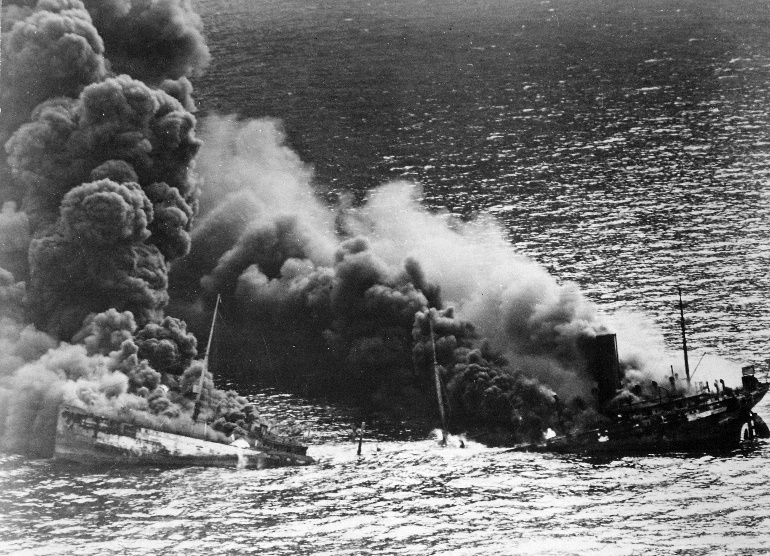
The hull of a U-boat is akin to a ship in design and functions; this means that it is essentially a ship that can submerge when need be. This means that a U-boat is most efficient on surface, with limited underwater hydrodynamics. The modern nuclear submarines have a cylindrical profile and are best suited for performing underwater. This explains why most early successful U-boat attacks all were conducted on surface, in the cover of darkness. This initial period of tasting success was fondly given the name First Happy Time.
The main ammunition of a U-boat was essentially the torpedo, though mines and deck guns too had a role to play. By the end of the war, German U-boats had sunk 3000-odd ships.
The emergence of Radar System proved to be a clarion call for the U-boats. Though radar systems were deployed on a U-boat too, the captains were iffy in using them in fear of being detected by enemy patrol ships.
German Offensive
Germany pitted its ambitious U-boats to hunt down merchant convoys that carried supplies from Canada, North America and other parts of the colonized British Empire to the sequestered island kingdom of UK, Soviet Union and other Allied provinces in the Mediterranean.
Sure, Germanys U-boat, Kriegsmarine was a daunting presence in the Atlantic, but could it challenge the combined offensive of the Allies? The Germans were woefully aware of Kriegsmarines limitation when juxtaposed with the combined forces of British Royal Navy and the French Navy. This must have prompted them to engage in commerce pillaging or wage the tonnage war. When the war was declared, several German ships including the U-boats were already at sea, and immediately began firing shots helter-skelter at the British and French ships; breaching all orders not to sink any passenger ships.
By the end of WW1, Germanys major warships had been scuttled and its imperial German navy had six battleships, six cruisers and barely 12 destroyers. To resurrect its lost glory, Germanys new navy, the Kriegsmarine designed one of the largest submarine fleet before entering WW2. Designed and built on a vengeful spirit, the U-boats were a terrorizing presence in the ocean, to the extent that Winston Churchill is said to have written that the only thing that really frightened him during the war was the U-boat peril.
The initial months of the war, U-Boats served more than their purpose and scuppered any number of ships bound to Britain. This relentless scuttling of ships directed to Britain came to be known as the Battle of the Atlantic.
The first phase of attack was mainly a piecemeal approach where single U-boat attacked merchant ships which were escorted by convoys. The deployment of aircrafts to escort the merchant ships proved to be no deterrent to the German U-boats as they too changed tactics and began to launch wolf packs to attack the ships. By this time, Germany had acquired air and naval bases in Norway and western France, thus they could attack much farther into the Atlantic. By giving out radio signals, the packs could apprise each other of convoy movements. This too proved quite formidable tactics in sinking merchant ships.
Otto Kretschmer and Gunther Prein were the most successful German U-boat commander.
Allied Sponsored German-Blockade
German Graf-Spee being scuttled
Also known as the economic war, Blockade of Germany was a ploy carried out by the UK and France in order to cut the mineral, metal, food and water imports of Germany and later also Italy so as to cripple its war efforts.
With the persistent German indiscretion on the Atlantic with its U-boat offensive, since WW1, the Allied were time and again biting the bullet and was desperately in need to counter-strike. Britain required more than a million ton of imported goods to feed its population and to replenish its war ammunition. Destroying U-boat was vital in halting the advancing axis power in Western Europe.
The blockade was carried out in different phases.
Phoney war: The British seized merchant ships from neutral countries en-route Germany and captured the cargo. This was barely a deterrent to German, as it continually received shipments from the Soviet Union until June 1941, not to mention using the Spanish ports to receive war materials.

